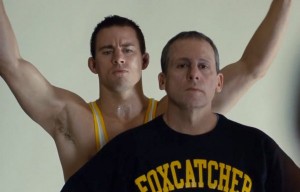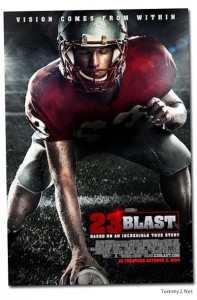McFarland USA
Posted on February 19, 2015 at 5:58 pm
B+| Lowest Recommended Age: | Middle School |
| MPAA Rating: | Rated PG for thematic material, some violence and language |
| Profanity: | Some strong language |
| Alcohol/ Drugs: | Drinking |
| Violence/ Scariness: | Some gang-style violence, mostly off-screen, characters injured |
| Diversity Issues: | A theme of the movie |
| Date Released to Theaters: | February 20, 2015 |
| Date Released to DVD: | June 1, 2015 |
| Amazon.com ASIN: | B00UI5CUSM |

In 1987, Coach Jim White (Kevin Costner), who had never coached or even run cross country, took a team of kids from one of the poorest communities in California to a state championship. Of course that would have to become a Disney movie. But in 2015, it is near-impossible to make a movie about a white coach and his all-Latino team without falling into one of two equally fatal traps. We are no longer in an era when it is acceptable to have a “mighty whitey” movie has a white savior teaching people of color a better way to live. We are also no longer in an era where it is acceptable to have a “magical Negro” plotline, with a person of color teaching a white person a better way to live. We all have people in our lives who teach us important lessons, but presenting these stories in a sensitive way is an almost insurmountable challenge.
“McFarland USA” comes as close as it can to surmounting that challenge by wisely — and honestly — showing what everyone in the story learns from the experience. That comes from warm, sensitive performances by all involved and by telling details. The best is after the team comes in last in their first meet because the coach failed to check out the terrain. The team had never practiced on an incline and the course of the raise included some steep passages. So, for their next practice, Coach White brings them to a place where he and the audience see enormous piles of something under tarps. White knows only that this is a good place to practice running uphill. The team knows what is under the tarps — millions of discarded almond shells, removed by field workers, so supermarkets across the country can stock shelled nuts in little plastic pouches. The symbolism, and White’s growing understanding not just of the challenges faced by his team but of their dedication, perseverance, and strength is un-sappy and touching.
It begins with White getting fired for an outburst at an arrogant high school football captain, and taking a job as an assistant football coach in the small farm town of McFarland in central California. The entire population is Latino and most of them work in the fields as “pickers,” starting at age 10. The kids and teenagers work before and after school. White is quickly relieved of his responsibilities as assistant coach when he takes a player out of the game because he has been injured. He decides to start a cross-country team, even though the principal tells him ‘That’s a private school sport. They breathe different air.” White has no experience. Also, because this is 1987, it would be about a decade before he could just Google how to do it. No one at the school has the time — or the shoes — for distance running. But he can see that they can run, and he gets them to agree to try to compete. At first, he does not even have a stopwatch to time their runs. He uses a kitchen timer.
It is a poor community. No one in the boys’ families has more than a 9th grade education. The high school is next door to the prison, with a barbed-wire fence. The families see sports as “not essential,” a distraction that keeps the boys away from paying work on the fields. “Every hour with you is food off my table,” says one father. But White and the community learn to trust each other, even after a scary encounter.
Director Niki Caro (“Whale Rider”) has a sensitive touch and a trust in her story and characters that gives them space to breathe. The running scenes are vivid and exciting. By the time we get to the end credit sequence, showing the team now in their 40’s and still running every day in McFarland, we see that more than the state championship has been won.
Parents should know that there are a few bad words, some drinking, and some gang-style violence. It is mostly off-screen, but characters are injured and there are brief disturbing images.
Family discussion: Which teachers have made you see that you were capable of more than you thought? How did White and the team demonstrate that to each other? When did the team start calling him “coach” and why?
If you like this, try: “Spare Parts,” “Chariots of Fire,” and “Hoosiers” and this interview with Carlos Pratts



